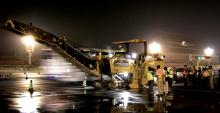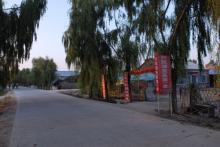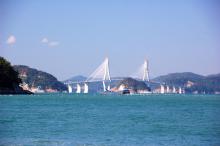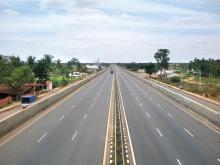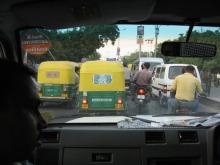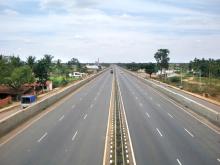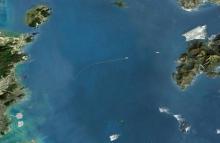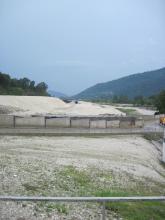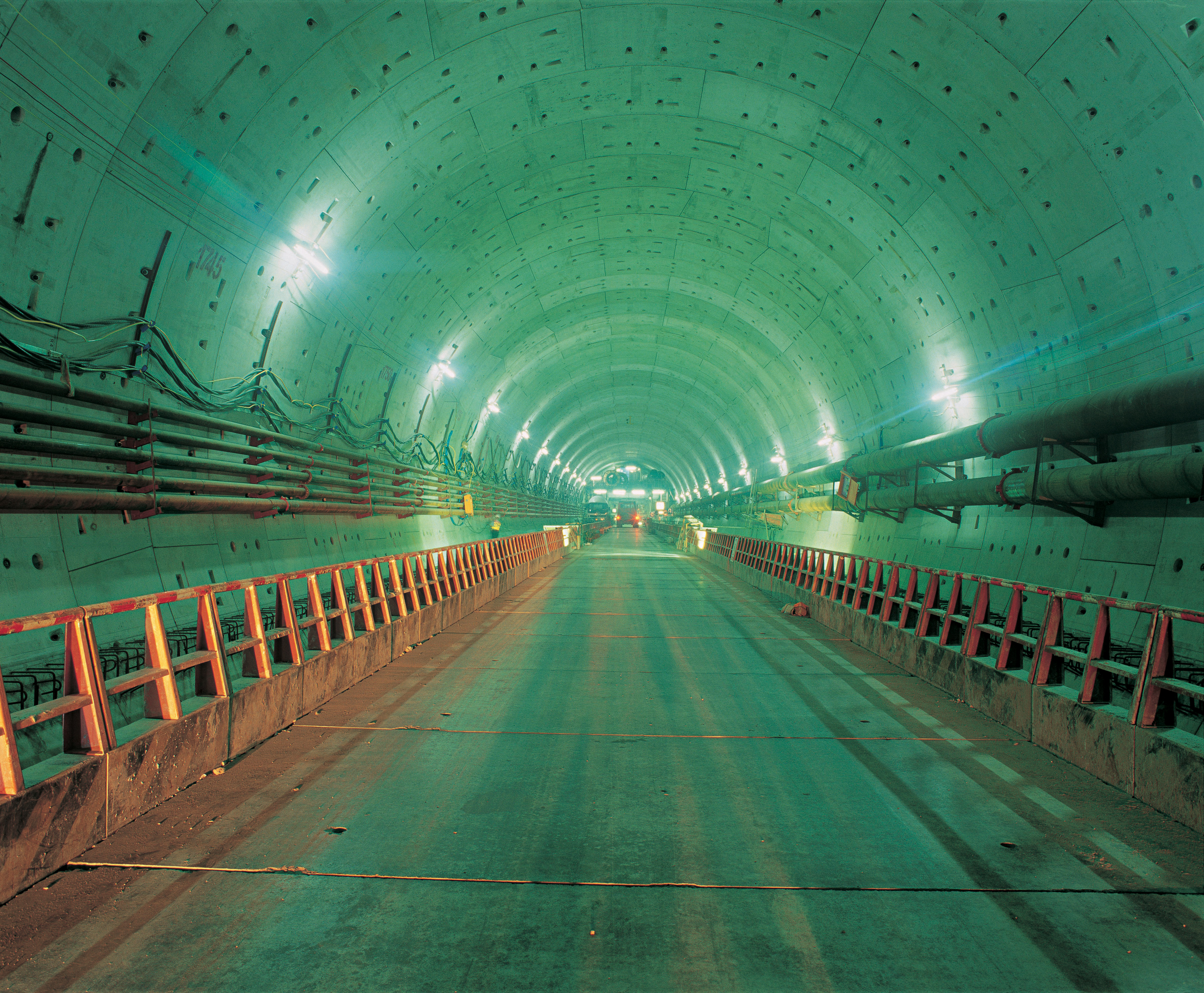
As Russia prepares for a major Asia Pacific conference in nearly four years' time, the economic climate is felt in other countries in the region. Patrick Smith reports
AUS$1 billion-plus suspension bridge is to be built to link the city of Vladivostok in the far east of Russia and Russky Island. Russia's President Dmitry Medvedev has signed an instruction for construction of the 3,150m long bridge, which is intended to provide access to the 24th Asia Pacific Economic Cooperation (APEC) summit, to be held on Russky Island in 2012.The bridge is estimated to cost around
$1 billion and is part of a $6 billion project to prepare for the summit. Other facilities will include a conference centre and several luxury hotels which are planned for the island, along with improvements to Vladivostok's airport and roads.
APEC, established in 1989, is the premier forum for facilitating economic growth, cooperation, trade and investment in the Asia Pacific region.
Its 21 members are Australia, Brunei Darussalam, Canada, Chile, People's Republic of China, Hong Kong (China), Indonesia, Japan, Republic of Korea, Malaysia, Mexico, New Zealand, Papua New Guinea, Peru, The Republic of the Philippines, The Russian Federation, Singapore, Chinese Taipei, Thailand, USA and Vietnam, and they at present account for approximately 40% of the world's population; around 55% of world gross domestic product (GDP) and about 49% of world trade.
Each, to a greater or lesser degree, is feeling the effects of the current economic situation, and as the Russian APEC website (www.apec2012.ru) countdown clock ticks away the hours, minutes, seconds and days to the event, it is difficult to say what the world will be like in just less than four years' time.
Vladivostok is Russia's largest port city on the Pacific Ocean and the administrative centre of Primorsky Krai, and last year designers presented project plans for a bridge linking Vladivostok with its Russky Island, which envisaged a 70m high structure over the Bosfor Vostochny Strait, which divides the two.
Meanwhile, elsewhere in the Asia Pacific region most of the economies have been hit by the 'credit crunch' although construction projects in many instances will go ahead, and others planned before the crisis have, or are, coming to fruition.
Only weeks ago, China, the powerhouse economy in the region (India is also moving rapidly), said it was initiating a US$586 billion package to help boost the country's weakening economy and counter looming global recession.
After years of growth (a spectacular 11.7% in 2007) the country's economy is slowing up, with the
However, it is hoped the cash injection from the government will help, with investments going ahead in ten areas including rural infrastructure.
According to statistics, each year China expands its network of motorways by over 4,000km, and according to the Chinese Transport Ministry around 55,000km of new motorway will have been built by 2010 alone.
"It's an impressive undertaking, especially since China only started building motorways in 1988, the first section being between Shanghai and Jiading.
"But this is not just happening in China; all over Asia new roads, and also tunnels, are springing up at a fast pace," says Messe München International (MMI, Munich Trade Fairs International Group), organisers of the recent
According to a report drawn up before the current economic downturn: "The dynamic pace of growth in China is also reflected in the activities of the the
Estimates are that China's construction industry will probably expand by more than 20% over the next few years, but it is not only Shanghai and Beijing, but also many other Asian metropolises are fast-tracking road and tunnel construction programmes to keep pace with rising demand.
For example, according to MMI many construction equipment manufacturers see their engagement in Vietnam through its Con-Build Vietnam show as a long-term commitment towards one of the fastest growing markets in South East Asia, a market which had drawn over some $45 billion of Foreign Direct Investment (FDI) in the last eight months of 2008.
"This figure reflects the continued and strong interest of the global business community in Vietnam," says the company.
Indeed, the country's Minister of Construction Cao Lai Quang said: "As Vietnam integrates into the global economy, its construction industry, in conjunction with other industries, has become the key engine for growth, a forceful motivation for its economic and social development.
"Vietnam's construction industry will continue to grow rapidly and many projects put into operation have attracted local and foreign investment. Along with the new plan of extension of Hanoi metropolis and Ho Chi Minh City, there will be a great demand for consultancy and technology support besides the hardware of construction and building." However, one of the biggest construction sites in the world is in India where it is said that some $330 billion is to be invested in contraction measures at focal points by 2015, with the emphasis mainly on road, airport and harbour construction, and also on projects for improving the supply of electricity and drinking water as well as construction of residences.
According to estimates by the Confederation of Indian Industries, the construction industry will grow by an average of at least 10% over the next five years, although this may have to be revised because of the economic situation.
The greatest investments have, and will be, made in road construction and energy. Approximately 10,000km of two-lane roads and 20,000km of four-lane highways are on the shopping list of the Indian government as build-operate-transfer-projects.
Metso Park
In October,
Metso is investing E30 million ($37.6 million), its largest investment ever, over a period of two years to establish the park. The facility will be fully operational by 2010 giving an opportunity for employment to around 700 people. This follows the ongoing expansion programmes in India with foundry and factory operations in Ahmedabad and Bawal respectively that were completed in August this year.
Metso Park will include office premises, several workshops, warehousing, and a logistics centre. The facility will initially cater to meet the rapid growth in demand for Metso's products and services in India, and will host Metso's own new operations as well as selected key suppliers.
It will initially manufacture components of mobile crushing and screening plants, conveyors, slurry pumps and rubber products for the construction and mining customers in India and for export.
Metso Minerals president Matti Kähkönen, said: "India's developing infrastructure sector provides us an excellent opportunity and we are pleased to establish Metso Park here. The India market is an important part of our global strategy and we are determined to establish a strong presence here. This industrial park concept is the first of its kind for Metso and represents a milestone in our growth strategy."
CONEXPO Asia's new MD
Kaien Li has been promoted to managing director of the
Kaien Li will also serve as director of Asia sales for all AEM shows, which cover construction and agriculture.
AEM says that exhibit space sales for CONEXPO Asia 2009 are now open, and since the inaugural event in 2006, the show has more than doubled in size and it expects another successful exhibition next year.
Show organiser is also the China Chamber of Commerce for Import and Export of Machinery and Electronic Products (CCCME).
AEM has operated a full-time China office for more than ten years, located in Beijing.
"The Asia-Pacific region is increasingly important in AEM's global activities to promote trade opportunities and help advance safety, training, standards and statistics programs for the worldwide growth of the off-road equipment industry," says the AEM.

